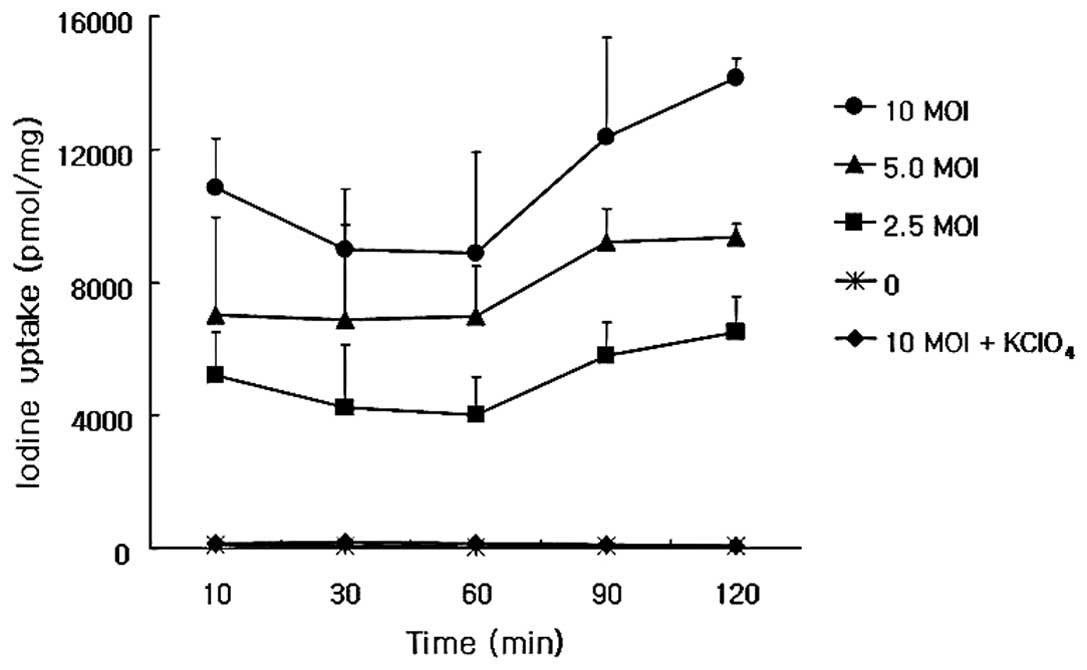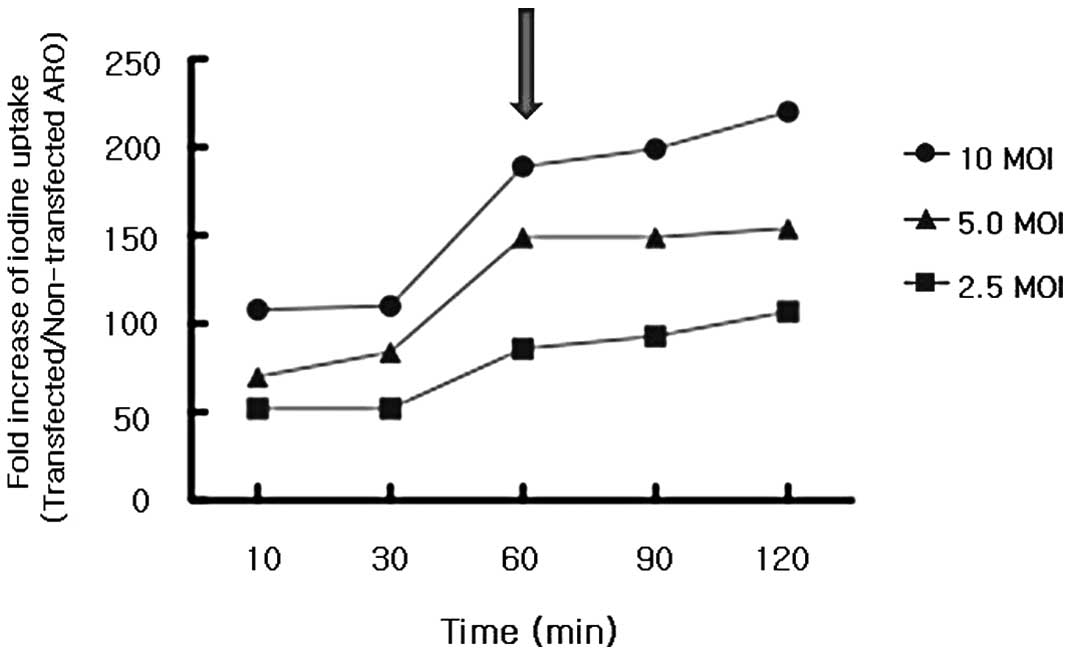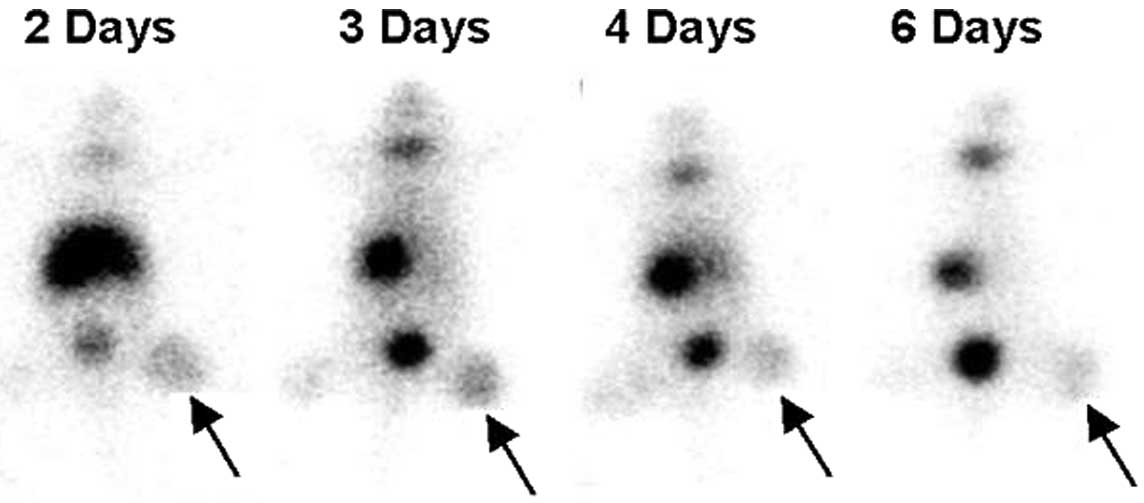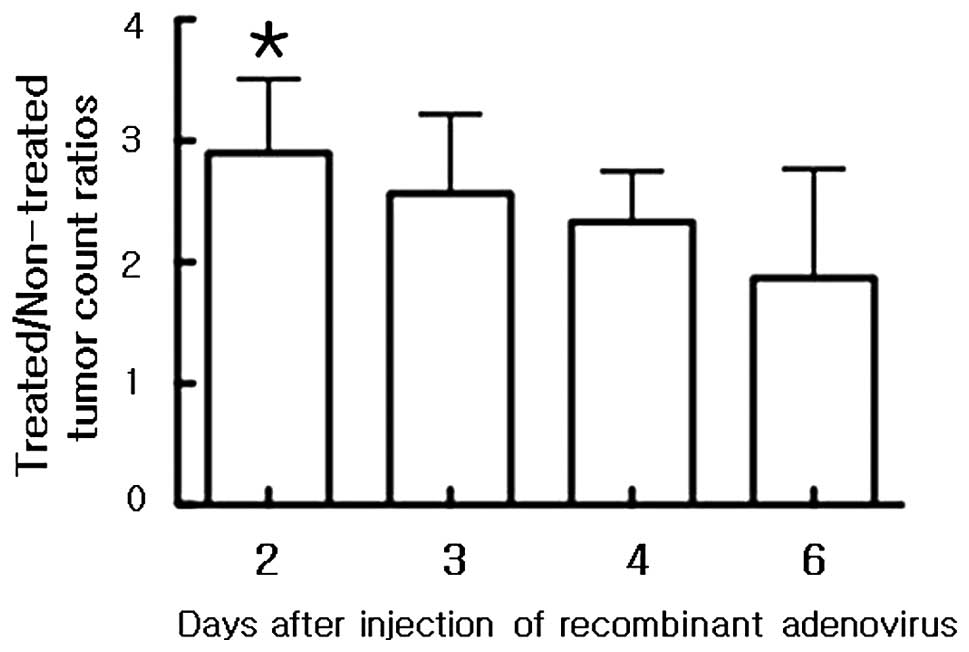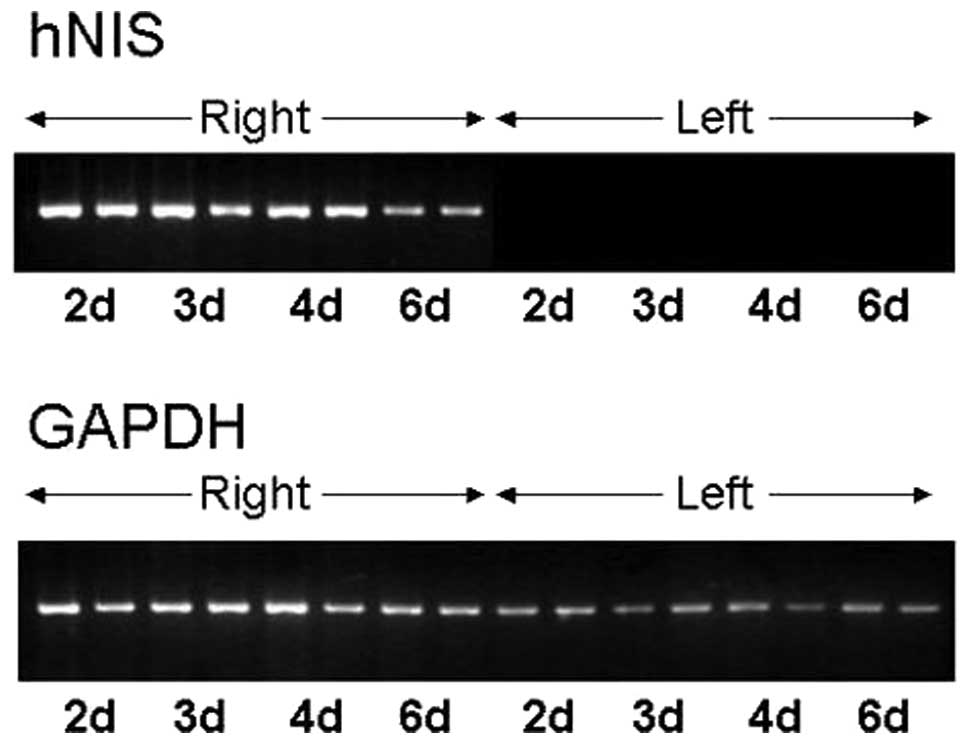|
1
|
Maxon HR, Thomas SR, Hertzberg VS,
Kereiakes JG, Chen IW, Sperling MI and Saenger EL: Relation between
effective radiation dose and outcome of radioiodine therapy for
thyroid cancer. N Engl J Med. 309:937–941. 1983. View Article : Google Scholar : PubMed/NCBI
|
|
2
|
DeGroot LJ, Kaplan EL, McCormick M and
Straus FH: Natural history, treatment, and course of papillary
thyroid carcinoma. J Clin Endocrinol Metab. 71:414–424. 1990.
View Article : Google Scholar : PubMed/NCBI
|
|
3
|
Schlumberger MJ: Papillary and follicular
thyroid carcinoma. N Engl J Med. 338:297–306. 1998. View Article : Google Scholar : PubMed/NCBI
|
|
4
|
Chung JK: Sodium iodide symporter: its
role in nuclear medicine. J Nucl Med. 43:1188–1200. 2002.PubMed/NCBI
|
|
5
|
Chung JK, Youn HW, Kang JH, Lee HY and
Kang KW: Sodium iodide symporter and the radioiodine treatment of
thyroid carcinoma. Nucl Med Mol Imaging. 44:4–14. 2010. View Article : Google Scholar : PubMed/NCBI
|
|
6
|
Dai G, Levy O and Carrasco N: Cloning and
characterization of the thyroid iodide transporter. Nature.
379:458–460. 1996. View
Article : Google Scholar : PubMed/NCBI
|
|
7
|
Smanik PA, Liu Q, Furminger TL, Ryu K,
Xing S, Mazzaferri EL and Jhiang SM: Cloning of the human sodium
iodide symporter. Biochem Biophys Res Commun. 226:339–345. 1996.
View Article : Google Scholar : PubMed/NCBI
|
|
8
|
Dohan O, De la Vieja A, Paroder V, et al:
The sodium/iodide Symporter (NIS): characterization, regulation,
and medical significance. Endocr Rev. 24:48–77. 2003. View Article : Google Scholar : PubMed/NCBI
|
|
9
|
Boland A, Ricard M, Opolon P, et al:
Adenovirus-mediated transfer of the thyroid sodium/iodide symporter
gene into tumors for a targeted radiotherapy. Cancer Res.
60:3484–3492. 2000.PubMed/NCBI
|
|
10
|
Cho JY, Xing S, Liu X, et al: Expression
and activity of human Na+/I− symporter in
human glioma cells by adenovirus-mediated gene delivery. Gene Ther.
7:740–749. 2000.
|
|
11
|
Spitzweg C, O’Connor MK, Bergert ER,
Tindall DJ, Young CY and Morris JC: Treatment of prostate cancer by
radioiodine therapy after tissue-specific expression of the sodium
iodide symporter. Cancer Res. 60:6526–6530. 2000.PubMed/NCBI
|
|
12
|
Cho JY, Shen DH, Yang W, et al: In vivo
imaging and radioiodine therapy following sodium iodide symporter
gene transfer in animal model of intracerebral gliomas. Gene Ther.
9:1139–1145. 2002. View Article : Google Scholar : PubMed/NCBI
|
|
13
|
Schipper ML, Weber A, Behe M, et al:
Radioiodide treatment after sodium iodide symporter gene transfer
is a highly effective therapy in neuroendocrine tumor cells. Cancer
Res. 63:1333–1338. 2003.PubMed/NCBI
|
|
14
|
Mandell RB, Mandell LZ and Link CJ Jr:
Radioisotope concentrator gene therapy using the sodium/iodide
symporter gene. Cancer Res. 59:661–668. 1999.PubMed/NCBI
|
|
15
|
Shimura H, Haraguchi K, Miyazaki A, Endo T
and Onaya T: Iodide uptake and experimental 131I therapy
in transplanted undifferentiated thyroid cancer cells expressing
the Na+/I− symporter gene. Endocrinology.
138:4493–4496. 1997.PubMed/NCBI
|
|
16
|
Smit JW, Shroder-van der Elst JP,
Karperien M, et al: Reestablishment of in vitro and in vivo iodide
uptake by transfection of the human sodium iodide symporter (hNIS)
in a hNIS defective human thyroid carcinoma cell line. Thyroid.
10:939–943. 2000. View Article : Google Scholar : PubMed/NCBI
|
|
17
|
He TC, Zhou S, da Costa LT, Yu J, Kinzler
KW and Vogelstein B: A simplified system for generating recombinant
adenoviruses. Proc Natl Acad Sci USA. 95:2509–2514. 1998.
View Article : Google Scholar : PubMed/NCBI
|
|
18
|
Spitzweg C, Dietz AB, O’Connor MK, Bergert
ER, Tindall DJ, Young CY and Morris JC: In vivo sodium iodide
symporter gene therapy of prostate cancer. Gene Ther. 8:1524–1531.
2001. View Article : Google Scholar : PubMed/NCBI
|
|
19
|
Lee WW, Moon DH, Park SY, Jin J, Kim SJ
and Lee H: Imaging of adenovirus-mediated expression of human
sodium iodide symporter gene by 99mTcO4 scintigraphy in mice. Nucl
Med Biol. 31:31–40. 2004. View Article : Google Scholar : PubMed/NCBI
|
|
20
|
Huang M, Batra RK, Kogai T, et al: Ectopic
expression of the thyroperoxidase gene augments radioiodide uptake
and retention mediated by the sodium iodide symporter in non-small
cell lung cancer. Cancer Fene Ther. 8:612–618. 2001. View Article : Google Scholar : PubMed/NCBI
|
|
21
|
Zhang L, Sharma S, Zhu LX, et al:
Nonradioactive iodide effectively induces apoptosis in genetically
modified lung cancer cells. Cancer Res. 63:5065–5072.
2003.PubMed/NCBI
|
|
22
|
Dadachova E, Bouzahzah B, Zuckier LS and
Pestell RG: Rhenium-188 as an alternative to Iodine-131 for
treatment of breast tumors expressing the sodium/iodide symporter
(NIS). Nucl Med Biol. 29:13–18. 2002. View Article : Google Scholar : PubMed/NCBI
|















